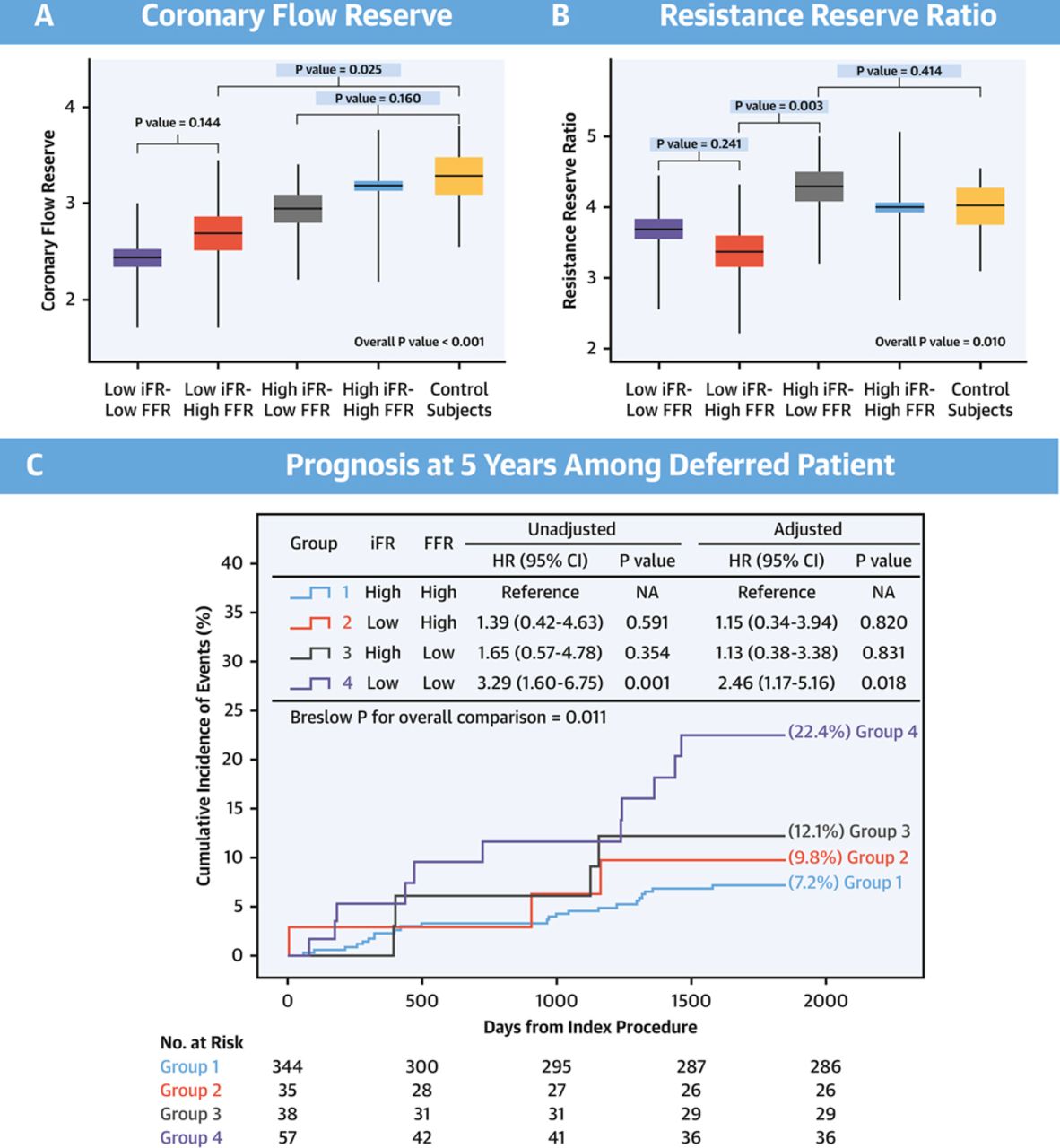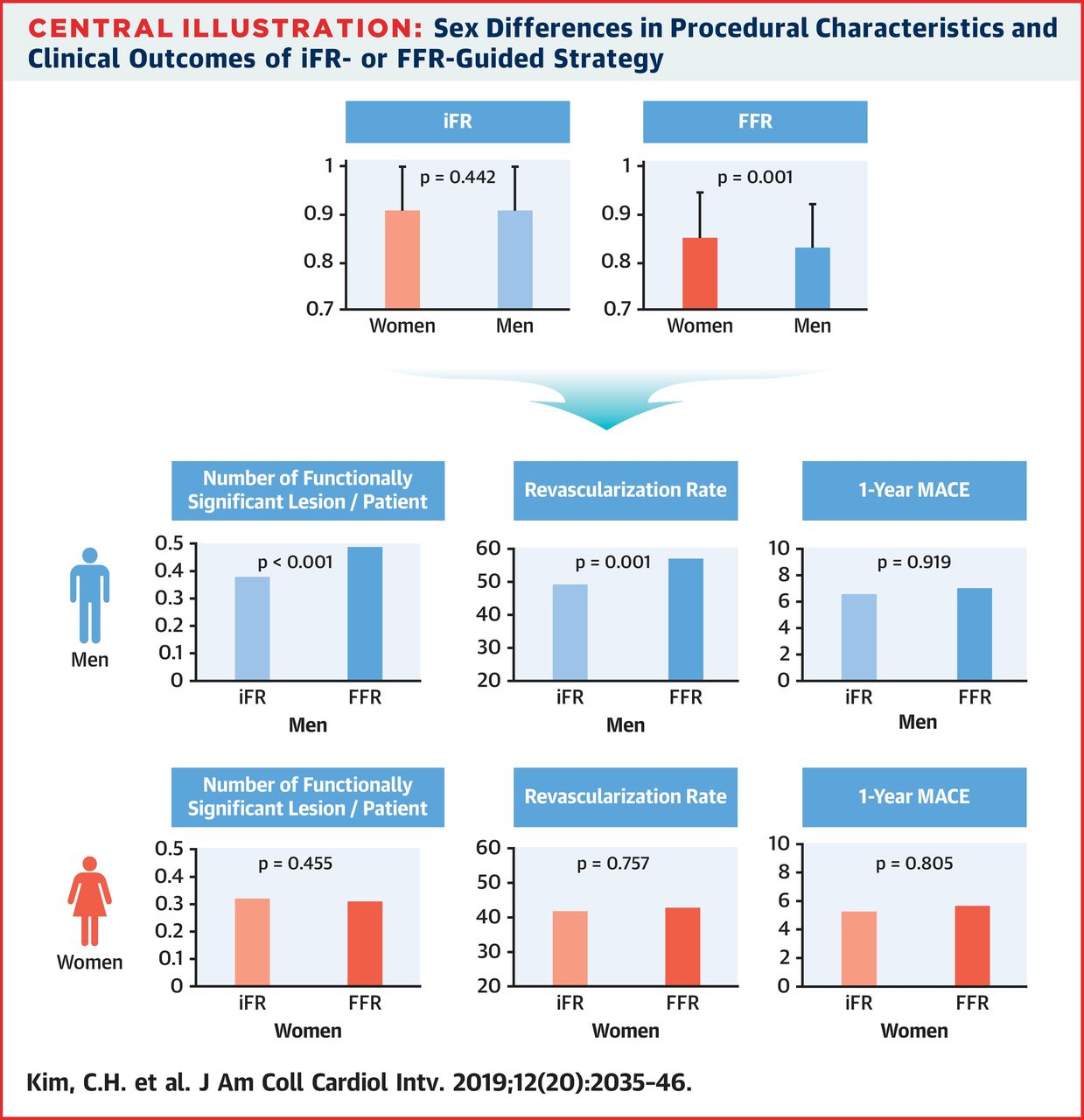
Pre-reading
Coronary Flow Reserve, Fractional Flow Reserve, Instantaneous wave free ratio
CBSMD
Coronary angiography has been the principle modality for assessing the severity of atherosclerotic coronary artery disease for several decades. However, there is a complex relationship between angiographic coronary stenosis and the presence or absence of myocardial ischemia. Early studies focused on coronary flow reserve (CFR) but more recent work has demonstrated the physiologic accuracy and prognostic value of the fractional flow reserve (FFR) and instantaneous wave free ratio (iFR) for the assessment of coronary artery disease. Although in the new era, "Coronary Flow Reserve in the Instantaneous Wave-Free Ratio/Fractional Flow Reserve Era: Too Valuable to Be Neglected".
Following researches put the discordance between iFR and FFR under the microscope.
October, 2019, "Physiologic Characteristics and Clinical Outcomes of Patients With Discordance Between FFR and iFR" reported that differences in coronary circulatory function were found, especially in the vasodilatory capacity between the low iFR–high FFR and high iFR–low FFR groups. FFR–iFR discordance was not related to an increased risk of POCO among patients with deferred lesions at 5 years.

In the same month, a post hoc analysis "Sex Differences in Instantaneous Wave-Free Ratio or Fractional Flow Reserve–Guided Revascularization Strategy" attempting to better delineate sex-based differences in iFR- and FFR-based revascularization strategies and added further prove that there was no observed difference in 1-year major adverse cardiac event rates (composite of death, nonfatal myocardial infarction, or unplanned revascularization) between men and women or strategy used (iFR or FFR).

Coronary Physiology in the Cardiac Catheterization Laboratory
J Clin Med. | Apr 27,2019
Sex Differences in Instantaneous Wave-Free Ratio or Fractional Flow Res...
JACC Cardiovasc Interv. | Oct 28,2019
Physiologic Characteristics and Clinical Outcomes of Patients With Disco...
JACC Cardiovasc Interv. | Sep 26,2019
Coronary Microcirculation Downstream Non-Infarct-Related Arteries in the...
J Am Heart Assoc. | Apr 27,2019
Robustness of Fractional Flow Reserve for Lesion Assessment in Non-Infa...
J Am Heart Assoc. | Apr 27,2019
Myocardial Blood Flow and Coronary Flow Reserve During 3 Years Follow...
JACC: Cardiovascular Interventions | Apr 26,2019
Impact of Abnormal Coronary Reactivity on Long-Term Clinical Outcomes...
J Am Coll Cardiol. | Feb 14,2019
Prognostic Implication of Thermodilution Coronary Flow Reserve in Patie...
JACC Cardiovasc Interv. | Aug 09,2018
Long-Term Coronary Functional Assessment of the Infarct-Related Artery ...
JACC Cardiovasc Interv. | Sep 03,2018
Impact of Percutaneous Revascularization on Exercise Hemodynamics in Pat...
J Am Coll Cardiol. | Apr 27,2019
Coronary Flow Reserve in the Instantaneous Wave-Free Ratio/Fractional F...
JACC Cardiovasc Interv. | Apr 27,2019
Prognostic Implication of Thermodilution Coronary Flow Reserve in Patie...
JACC Cardiovasc Interv. | Apr 27,2019
Clinical Significance of Concordance or Discordance Between Fractional F...
EuroIntervention. | Jan 24,2018
Anatomical plaque and vessel characteristics are associated with hemodynami...
Int J Cardiol. | Nov 13,2017